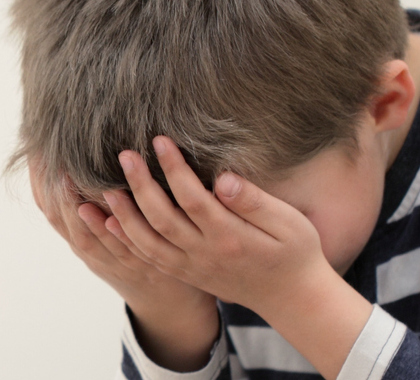It’s no secret that the education system’s horrible response to Covid did great damage to children, and not only academically. A survey released earlier this year revealed that the pandemic affected students’ mental health as well, with 70% of public schools seeing a rise in the number of children seeking psychological services. Also, 76% of schools report that faculty and staff members expressed concerns about depression, anxiety and trauma in students since the start of the pandemic.
It’s not only the response to Covid that is causing problems with kids, however. From 2009 to 2021, the share of American high-school students who said they feel “persistent feelings of sadness or hopelessness” rose from 26% to 44%, according to a recent CDC study. This is the highest level of teenage sadness ever recorded.
The CDC analysis also reveals that “37.1% of students experienced poor mental health during the pandemic, and 31.1% experienced poor mental health during the preceding 30 days.” Additionally, during the 12 months before the survey, 44.2% experienced persistent feelings of sadness or hopelessness, 19.9% had seriously considered suicide, and 9.0% had attempted suicide.
Social media use and its subsequent “lowering of sociality, general world stressors, and poor parenting” have all been labeled as causes of the children’s malaise. But there is one factor that has not been acknowledged: anomie, a state or condition of individuals or society characterized by a breakdown or absence of social norms and values.
And these days, it is our schools that all too often are in the vanguard of the disintegration of traditional norms and are at odds with families. Traditionally, teachers have tried to empower kids, but now the regnant pedagogy aims to foster tribalism, anger, resentment, and victimhood. As Lewis Andrews notes, “Sadly, today’s woke curricula do far more to erode a child’s sense of intrinsic worth than to build it up. Indeed, one can hardly imagine a more effective way of grooming disorganized and incompetent adults. As one veteran teacher in the Buffalo Public School system recently put it, anti-racist classrooms have devolved into little more than a series of ‘scoldings, guilt-trips, and demands to demean oneself simply to make another feel empowered.'” And of course, the schools’ forays into intimate sexual areas are also doing great damage.
Here are just a few of the countless examples of public schools behaving very badly:
–The Arizona Department of Education has created an “equity” toolkit, claiming that babies show the first signs of racism at three months old, and that white children become full racists – “strongly biased in favor of whiteness” – by age five.
–In San Francisco, the school district has decided that teachers don’t have to notify parents before digging into intimate gender identity lessons.
–But a school district in Kansas one upped San Francisco when it was discovered that a 4-year-old preschooler in the Turner School District in Kansas City took home Jacobs New Dress, a picture book in which “a little boy wears girls’ clothes and even competes with his friend Emily to be a princess.”
–”Satan Clubs” are popping up all over the country. In Bakersfield, CA – a fairly conservative part of the state – the leader of the after-school club asserted that devil worship shouldn’t be a problem, explaining that he felt the need to counter “Christian-based clubs.”
Another illustration of the dissolution of common culture is the idea of “community schools,” which have their roots in the early 20th Century Progressive Era. This plan makes schools into one-stop shops for families with all kinds of “wrap around services” like welfare-to-work programs, caregiving, a legal defense fund and foster care, all staffed by government workers. This won’t do anything for students academically, but it certainly does blur the lines of parent and state, which in turn is not good for the sanctity of the parent-child bond.
In fact, California has invested $4.1 billion – more than any other state – to support and expand community schools through the California Community Schools Partnership Program. Also, Fox News reports that Joe Biden’s 2023 fiscal budget calls for $468 million to fund community schools.
The teachers unions are, of course, totally on board with what amounts to co-parenting. The National Education Association now boasts on its website “Why Do Educators Strike? The Reasons Are Broadening.” The union’s new philosophy can be epitomized by the Chicago Teachers Union strike in 2012, when 26,000 Chicago teachers took to the streets for nine days. Along with a 30% pay increase, the union demanded wrap-around services for students.
The only good news to come out of all this is that many parents are seeing what is going on and are opting out of public schools. Data show that since 2019, private enrollment is up, public enrollment is down, and home schooling has become more popular. The U.S. Census Bureau reports that families are moving to private and home schools at a great rate. At the same time, k-12 public school enrollment will drop further to about 46 million students by fall 2030, according to the National Center for Education Statistics, reversing decades of growth.
The Washington Post recently detailed the story of seven parents who have decided that enough is enough. The common theme is that they all wanted to have greater control over their child’s education.
Also worth noting is that charter schools were the only type of public school to increase enrollment during the pandemic, experiencing growth in 39 of the 41 states that host charters. The National Alliance for Public Charter Schools (NAPCS) reports that nationwide, “public charters increased enrollment by 7%, while traditional public schools decreased by 3.5%. States that boasted the most growth in charter school enrollment include Washington (47%), Mississippi (37%), Oklahoma (30%) and South Carolina (25%).”
Ultimately, it’s up to parents to slow the looming dystopia. Homeschooling would go a long way to stanch the alienation that so many young people are experiencing now. If a parent is unable to homeschool, the next best situation is to give parents full financial control over where their child is educated, and have that child go to a traditional religious school. In fact, a great majority of studies show that traditional religiosity is a great antidote to depression in people of all ages.
Many children in America are disturbed, and a large share of the problem is being caused by the education bureaucracy which is typically in thrall to the leftist teachers unions. If we don’t do something to rectify this situation, when the current generation of kids reach adulthood, our country will be barely recognizable.
First published at For Kids and Country.





